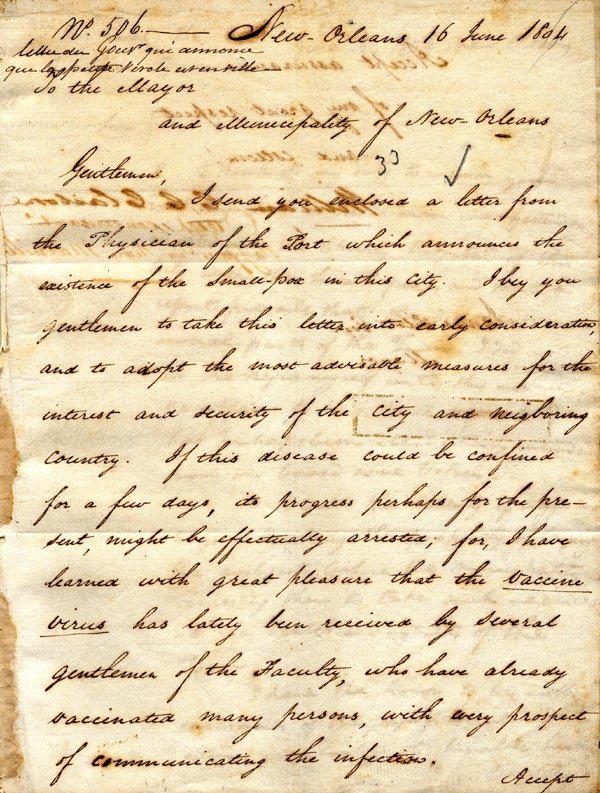
| ||||||
| Return to Table of Contents Go to Page [1] [2] [3] [4] [5] [6] [7] [8] [9] [10] [11] [12] [13] [14] [15] [16] [17] [18] [19] [20] [21] [22] [23] [24] [25] [26] [27] [28] [29] [30] [31] [32] [33] [34] [35] [36] [37] [38] [39] [40] [41] [42] [43] [44] [45] [46] [47] [48] [49] [50] [51] | ||||||
PAGE 24
| In this 1804 letter to the Mayor and
Municipal Council, Governor Claiborne transmitted the alarming news from Dr. Watkins, the physician of the
port (and later Mayor of New Orleans) that small pox, earlier detected on board ships downriver, had
reached the city itself. But the Governor took comfort in the fact that a supply of small pox vaccine was
available to help prevent a serious outbreak of the dreaded disease. The accompanying letter from Dr.
Watkins explained that small pox was discovered in a "Negro man" admitted to the Charity Hospital and
speculated that the victim may have been "clandestinely introduced from on board some vessel."
|
The small pox vaccine (actually an injection of the less serious disease cow pox) had only been discovered
by British physician William Jenner in 1796; it was introduced into New England in 1800 and reached the
Southern colonies a few years later. When smallpox appeared in the city in 1804, Governor Claiborne
strongly supported the use of the new vaccine over the older form of inoculation or variolation (which
involved deliberate exposure to smallpox itself), and, as a result, a major epidemic was averted. Next page of this document
| 
| ||||